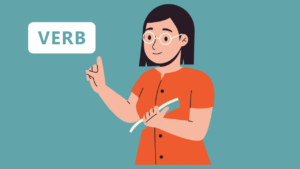English Language Teaching to Adults – Some Thoughts
Have you been teaching English to children and teenagers and you’re now interested in working with adult learners? Do you know what it takes? Are you ready for the change or challenge, as you may want to call it?
If you are in the situation described above, you’ve probably asked yourselves some of the questions below or many more!
Questions:
- Is teaching adults different from teaching children?
- How do those differences influence teaching and learning?
- What do teacher and learner roles involve?
In order to provide answers to the questions above, first you need to think of the reasons for adult language learning, because they inevitably influence the teaching and learning process and shape teacher and learner roles.
Why do adults study English?
Broadly speaking, adults usually decide to study English for professional, educational and recreational reasons.
Younger adults tend to choose to study English in order to be able to further their studies at an English-speaking institution at home or abroad. They need to reach a satisfactory level of general English that would allow them to live in an English- speaking environment as well as Academic English that would help them deal with the academic requirements of a university course (e.g. doing library search, writing course assignments, answering exam questions, attending lectures, making oral presentations).
Professionals often study English when they wish to seek employment abroad, explore better job opportunities at home or are there is a requirement to use this language for communication at their workplace. They usually need to reach a high level of General English as well as some English Specific to meet their professional and social needs.
Recreational reasons: a large number of adults study English as a hobby in order to be able to communicate with speakers of other languages; for example, when they travel abroad or use the internet. These learners would need some general English as well as specific English to use in the specific contexts they’ll find themselves.
How do these reasons influence teaching and learning?
The description above shows that one can characterise adult language learning by variety and complexity in terms of reasons for study and language requirements. Each adult learner can have their own unique reasons for learning and, therefore, unique language needs for their individual situations. This uniqueness adds to the complex nature of adult learner profile, is one of the most significant parameters of the teaching and learning process and contributes to the shaping of the learner and teacher roles throughout these processes.
Below we’ll look at some differences between children/adolescent and adult learner profiles and what these differences mean in terms of teaching.
TEACHING CHILDREN/ ADOLESCENTS VS TEACHING ADULTS: SOME BASIC ASPECTS
Children or adolescent learners seem to have one reason for studying the language. Their aim is to equip themselves with knowledge that will help them find a good job, study at an English-speaking institution at home or abroad in the future and communicate in an English-speaking or international context. However, an important aspect of their language study seems to be pleasing their parents and extended family. Because of this, teaching younger learners also means dealing with the expectations of a whole family and the challenges stemming from this.
Unlike younger learners, adults seem to have a clear idea about the purpose of their studies and what they’d like to achieve and their aims are in the near future. They are the only responsible for and interested in their studies and the only ones that can influence the learning and teaching process. For this reason, teaching adult learners means dealing with the expectations and the needs of the learners only and, in some cases, the employers that often fund their employees’ language courses.
The aspects of adult learners presented above influence the teaching- learning process as well as teacher and learner roles.
ADULT LEARNERS, THE PROCESS OF TEACHING & LEARNING AND TEACHER-LEARNER ROLES
This part will present three main characteristics of adult learners and see how they affect the process and the roles in the learning context; learner language knowledge and learning experience, age and clear purpose of learning.
The vast majority of adult learners usually start with some prior knowledge of the language. It is, indeed, very rare for you, as a teacher, to teach an adult who has never studied English before. This can work as an advantage, because they are already familiar, to some extent, with the language and have some experience as learners. On the plus side, the fact that an adult has (or should have) a clear idea of what they’d like to achieve and can very easily identify their aims and needs, can have a positive effect on their motivation. This should make your life easier, since motivation is one of the most important aspects of success in language learning.
However, this experience can also pose a threat to your new venture, as learners often come to the lesson with certain misconceptions about foreign language learning or some unpleasant learning experiences, which have made them adopt a certain attitude towards the whole process. This previous experience, as well as the age of these learners, can also mean that they have already developed their own learning style and strategies and may be resistant to change.
TEACHING ADULTS: PROCESS AND ROLES
Language and life experience, in general, as well as clarity of aims and needs can offer more autonomy to learners. In other words, they can have more control over what they learn and how they learn. Is this a blessing or a curse, for them and you, the teacher,? A rather complex issue to deal with, but we’ll look at it from different perspectives.
In terms of teaching, this means that the syllabus is on-going and the content is negotiable. You and your learner need to discuss their aims and plan their actions on a regular basis. Regular reviews, modifications, minor or major ones, adaptations, setting of new goals are all part of the game. You should be prepared for all this and should not be surprised if you’re informed about last minute lesson content changes by learners. I dare say that this is unavoidable when you work with adults. This requires understanding, flexibility, and adaptability. If you don’t like this, you should either get accustomed to it or simply choose not to work with adults.
In terms of roles in the teaching process there is a power balance in the teacher-learner relationship and the learner role is very dynamic and active.
Teaching children
When you teach children, they seem to have no choice but accept what you decide they should learn and how they learn better. Children see teachers as the people who know everything about the language, decide what their students need, and are always believed and trusted.
Parents sometimes wish [and tend] to interfere in your work, as they often believe that they should have a say in what their children should be taught and how this should be done by you. Parents often feel that they have every right to do so, because they pay you or they may also have language knowledge which qualifies them to tell you how to do your job. If you teach children, parents may wish to play an active role in their children learning process by interfering in your work, and part of your job may well be discouraging them from doing so.
Teaching adults
When working with adults, you, the teacher, become much more of a consultant and a facilitator. You actually have to share the responsibility of finding out what they need and in what situation they’ll need it.
If you teach adults, your learners should play a more active role in their learning, as I said earlier, by talking with you about their communication needs and syllabus content. This can empower learners.
If they don’t wish to get actively involved in this, part of your job is to encourage them to do so. Often times adult learners are reluctant to assume this role, because they may feel that you, the teacher, should decide about everything regarding the course or it may sound too empowering to them, as they may never have been asked to do this. In any case, teachers need to explain to them this changing learning role and clearly communicate the message that if there’s no cooperation from their part, they won’t be able to fully benefit from the language classes.
In other cases, adults can be too eager to assume their active role and they may wish to decide everything themselves, without recognising that you, the teacher, have a significant role to play, too. These types of learners can be extremely difficult to cooperate with. They may act like that because they are familiar with specific ways of language learning and, as a result, they do not wish to be exposed to new ways and would like you to teach them the way they see fit and are comfortable with – no matter how much outdated the method that they favour may be.
CONCLUSION
Teaching adults can be quite challenging but at the same time very rewarding. Keeping the balance between empowering learners and showing that you are a professional who knows what you’re doing is extremely important. You need to respect adult learners as equals and use everything they bring into this situation to your mutual benefit. At the same time you should clearly and firmly communicate the message that you’re a qualified responsible professional who is ready to assist them in achieving their desirable results in the most effective way, which may not be the one they may be more familiar with or have experienced.
RESOURCES CONSULTED
- Cook Vivian (2001) Second Language Learning and Teaching (3rd ed.) London: Arnold
- Carol Gray & John Klapper (2003) Key aspects of Teaching and Learning in languages. In Fry Steve Ketteridge & Stephanie Marshall (eds.) A handbook for Teaching and Learning in Higher Education (2nd ed.) Kogan Page Limited, Heather, 344 – 365.
- Knowles M. S. (1973) The adult learner: a neglected species. Houston. TX: Gulf
- Mckay, H. & Tom, A (2000) Teaching adult second language learners. New York: Cambridge University Press
- Nunan David (1988) The learner-centred Curriculum. Cambridge: Cambridge University Press:
- Richards Jack (2001) Curriculum development in Language Teaching. Cambridge: Cambridge University Press.
- Richards Jack & Willy Renandya (2002) (eds.) Methodology in Language Teaching: An anthology of Current Practice.
- New York: Cambridge University Press.
www.tesol.org/books/bk_CP_AdultLL_615 Adult Language Learners: An Overview [acccessed on 11th May 2014]
www.cal.org/caela/esl_resources/digests/beginQA.html
Beginning to work with Adult English Language Learners: Some considerations [accessed on 10th May 2014]




